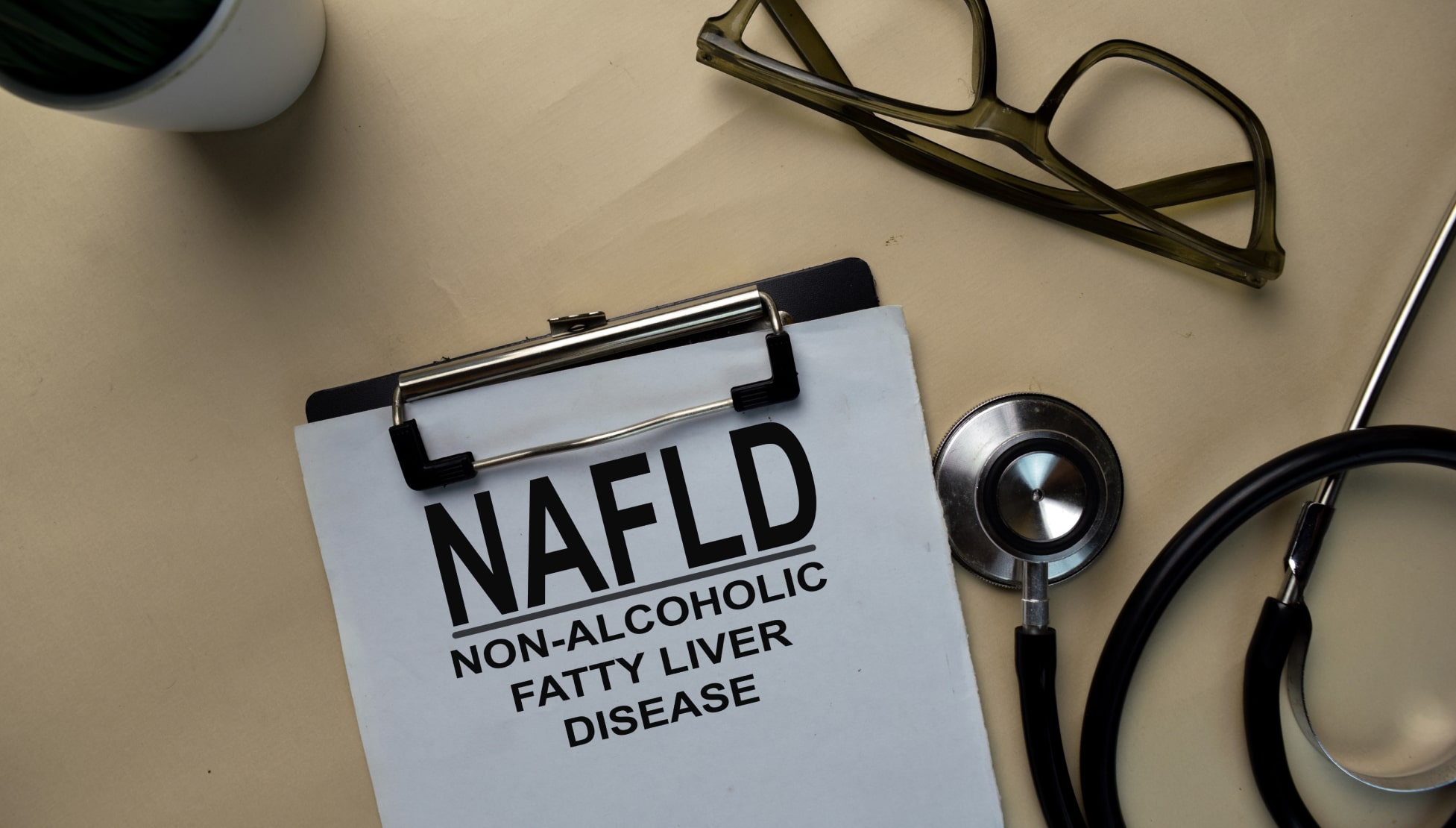
NAFLD Guidelines: A Shift in Understanding & Focus
As a follow up to our recent post, Diagnosing MASH (Liver Disease): A Meaningful Opportunity for Early Detection, where we introduced MASLD/MASH and why early detection matters, we are now taking a deeper look at why a significant shift in nomenclature has taken place around how we talk about liver disease.
The term “non-alcoholic fatty liver disease” (NAFLD), long used to describe a spectrum of liver conditions not attributable to excessive alcohol consumption, has evolved. The new terminology, “metabolic-associated steatotic liver disease” (MASLD), reflects a more precise understanding of the condition’s metabolic origins. This blog post explores the reasons behind this change, its implications for clinical communication, and how it aims to enhance patient management strategies by better aligning the disease nomenclature with its underlying causes and risk factors.
The Shift in NAFLD Guidelines Explained
The term NAFLD was coined to describe liver conditions characterized by excessive fat deposition in the liver, not linked to alcohol consumption. However, this broad term encompassed a wide range of liver abnormalities, from simple steatosis to non-alcoholic steatohepatitis (NASH), the latter potentially leading to cirrhosis and hepatocellular carcinoma. Recent guidelines and studies have advocated for a change to MASLD to better mirror the disease’s association with metabolic disorders. [1]
Why MASLD?
The adoption of MASLD over NAFLD serves multiple purposes:
- Clarity in Cause: MASLD links the condition directly to its metabolic roots, including obesity, insulin resistance, type 2 diabetes, and hyperlipidemia, among other factors. This reclassification aligns with emerging evidence that metabolic dysfunction is at the core of disease manifestation.
- Greater Focus on At-Risk Populations: Obesity, type 2 diabetes, and dyslipidemia are often present well before significant liver damage occurs. This makes it imperative for clinicians and healthcare systems to prioritize the routine screening of individuals with these risk factors.
- Improved Patient Management: With a clearer understanding of MASLD’s etiology, physicians can tailor management strategies more effectively, focusing on those underlying metabolic disorders.
- Enhanced Clinical Communication: The new terminology provides a more accurate description of the disease, facilitating clearer communication among healthcare professionals, improving research clarity, and enhancing public health messaging.
Implications for Clinical Practice
The shift from NAFLD to MASLD necessitates adjustments in clinical practice, particularly in diagnosing and managing patients. Physicians are encouraged to use comprehensive metabolic panels and consider insulin resistance therapies and lifestyle interventions targeting metabolic health. Moreover, the new nomenclature may prompt a reevaluation of treatment targets and guidelines to focus on metabolic improvements. [2]
Patient Management Strategies
In line with NAFLD Guidelines and given the metabolic underpinnings of MASLD, the following strategies are vital in managing patients effectively:
- Lifestyle Modifications: Weight loss, dietary changes, and increased physical activity remain the cornerstone of managing MASLD. A healthy diet low in saturated fats and sugars, combined with regular aerobic exercises, can significantly reduce liver fat. [3]
- Pharmacological Interventions: For those with MASLD and significant metabolic risk factors, pharmacological treatments such as semaglutide (GLP-1-RAs) have shown promise in reducing liver fat content and improving metabolic parameters in patients with or without type 2 diabetes. [4] (We will cover more on treatment advancements in a future post within this blog series.)
Benefits of Early Intervention
The benefits of early detection extend beyond delaying disease progression. By identifying MASLD at an early stage, patients can benefit from timely lifestyle interventions and, when necessary, pharmacological treatments that significantly reduce liver fat and improve metabolic parameters. Early interventions have been shown to reverse steatosis and prevent fibrosis, enhancing long-term liver health outcomes and overall quality of life for patients. [5]
Looking Ahead
In essence, the shift from NAFLD to MASLD advocates for a holistic approach to liver health that prioritizes early detection and proactive management, aligning with a broader understanding of the disease’s metabolic roots. This not only improves patient outcomes but also streamlines the pathway to a healthier population by integrating liver health into broader metabolic health discussions.
The dialogue around MASLD is just beginning, with the potential to impact clinical approach, patient education, and public health efforts aimed at one of the most prevalent liver conditions worldwide.
